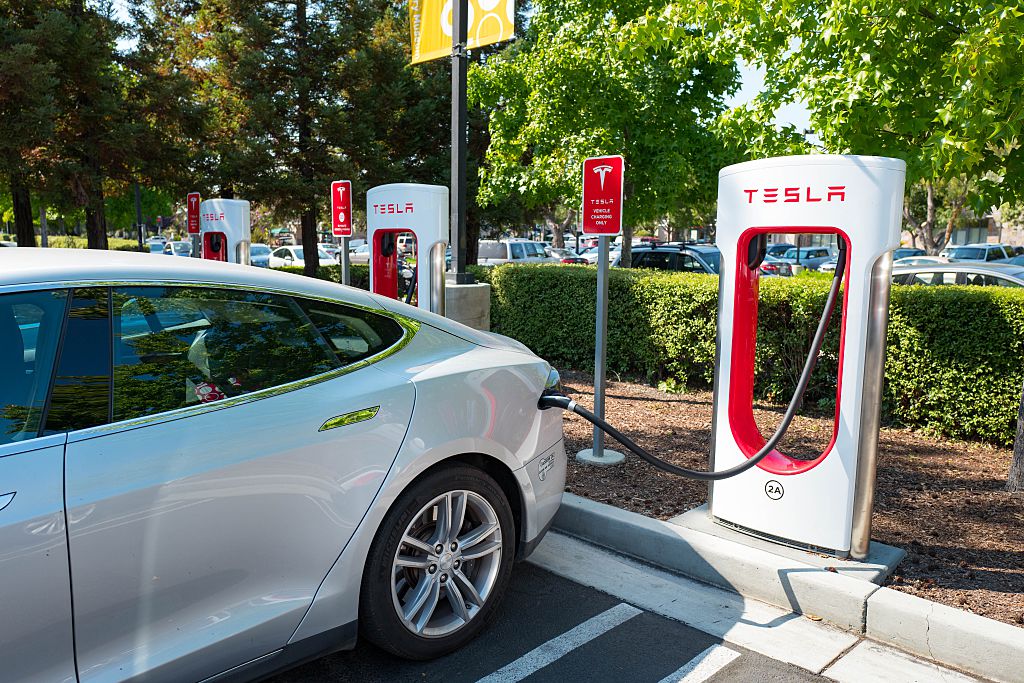
Americans across the political spectrum are united–at least when it comes to hating high gas prices. That’s why EPA’s proposed clean car standards, which will lead to wider choices in skip-the-gas-pump electric vehicles, are such good news for everyone.
The new standards will help encourage carmakers to offer many more affordable EV options for consumers. That, combined with new tax rebates, private sector investment, and state policies will mean more families can stop worrying about the price oil companies are charging for a gallon of gas.
EPA’s proposals, along with changes in the marketplace and other policies, are also expected to rapidly increase the variety of electric vehicles. Automakers are already releasing popular models like the Mustang Mach-E, F-150 Lightning pickup, while GM has announced a move to a full line of EVs.
Analysts expect the cost of electric vehicles to head in the same direction as solar and wind power, the price of which has dropped dramatically in recent years. That’s on top of the already substantial fuel cost savings from owning an electric vehicle.
Of course, not everyone is happy. Some who benefit from keeping things the way they are have tried to scare consumers in every way possible, including suggestions that their options will be reduced. This ignores the fact that Americans want a wide selection of EVs because they’re cheaper to operate and are more reliable. And the reality is that gas powered cars will continue to be sold under EPA’s new tailpipe standards.
Some have also raised questions about the source of power for electric vehicles. It is imperative that electric cars be charged by a grid that runs on clean energy. The good news is – thanks to new incentives from Congress and the fact that renewable power is the cheapest form of energy to build – America’s power supply is rapidly headed in that direction.
What’s more, electric vehicles will help stabilize the grid, utilities say. That’s because they can encourage EV owners to plug in at home when electricity demand is low, boosting revenue during off-peak hours and generating additional funds to help pay for grid upgrades.
Meanwhile, the U.S. has committed to building a nationwide network of 500,000 public chargers by 2030, up from 130,000 today. And companies are doing the same. 7/Eleven, for example, has announced that it will have charging stations at all of its locations, so you’ll be able to drink a Slurpee while charging your car.
The proposed standards would have at least two other major benefits that will be widely welcomed.
For decades Americans have seen industries and jobs move overseas, hurting our ability to maintain a strong middle class. This new proposal – along with investments made by Congress last year – will help us win the global race to build electric vehicles and their components. Already, we’ve seen companies react to policy changes by investing over $120 billion across the country in places like Michigan, Georgia, Nevada, South Carolina, Ohio, North Carolina, Arizona, and Texas. These new and expanded plants will support more than 143,000 new jobs in America – and estimates from Goldman Sachs suggest the impact of new tax credits could be three times bigger than even supporters estimated.
The EPA proposals can help drive that progress further forward.
The new proposals would also help clean the air. Thousands of Americans die early each year and many more suffer the harmful impacts of air pollution from the transportation sector. Clearing the air is especially important in neighborhoods that have long faced heavy amounts of pollution, hurting generations of children. Importantly, the standards will also help slow climate change, which is leading to hugely expensive and dangerous impacts, like stronger hurricanes and more frequent flooding.
These changes by EPA will help ensure about two-thirds of the new cars and passenger trucks sold in America will be tailpipe pollution free a decade from now. The proposed standards would also mean that up to half of new urban delivery and freight vehicles sold by 2032 will be zero-emitting. That means fewer trucks delivering pollution to your neighborhood.
You’ll hear a lot of misinformation from those who aren’t happy that the auto industry is innovating. Remember why they’re saying it. The reality is that these proposals will lead to more choices of cooler, affordable, high-performance pollution-free cars that consumers love.
More Must-Reads From TIME
- The 100 Most Influential People of 2024
- Coco Gauff Is Playing for Herself Now
- Scenes From Pro-Palestinian Encampments Across U.S. Universities
- 6 Compliments That Land Every Time
- If You're Dating Right Now , You're Brave: Column
- The AI That Could Heal a Divided Internet
- Fallout Is a Brilliant Model for the Future of Video Game Adaptations
- Want Weekly Recs on What to Watch, Read, and More? Sign Up for Worth Your Time
Contact us at letters@time.com